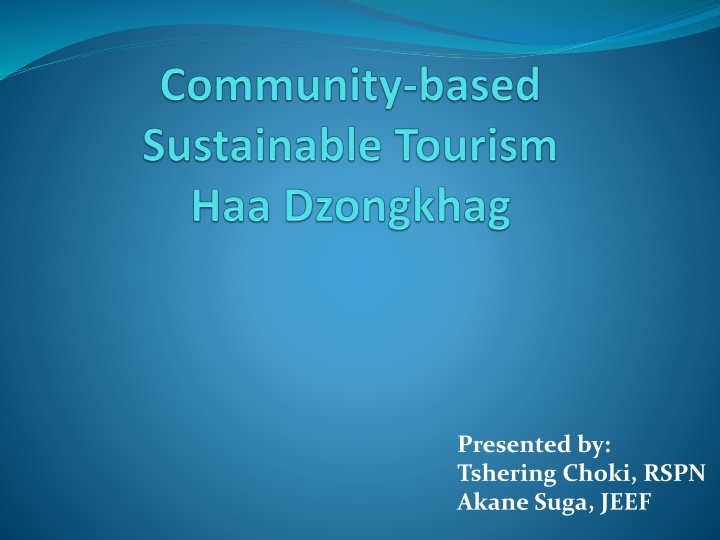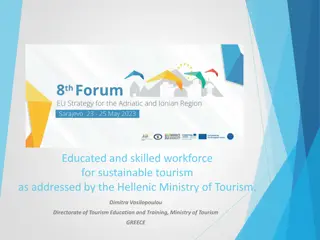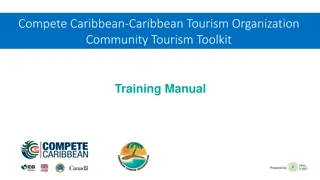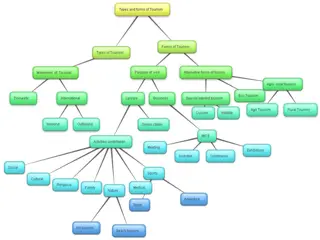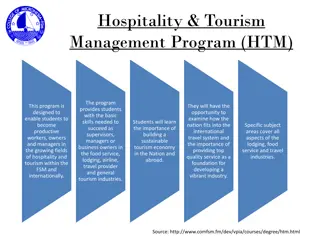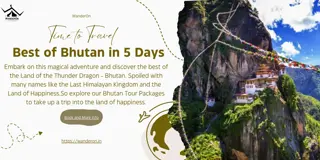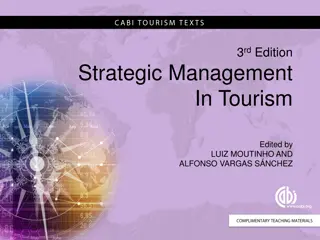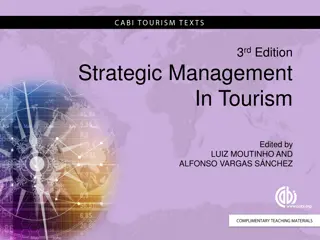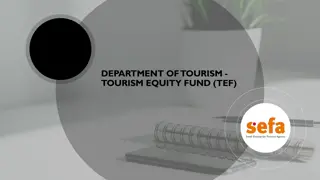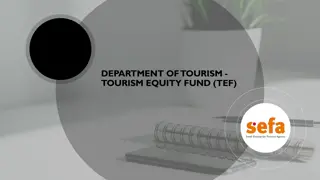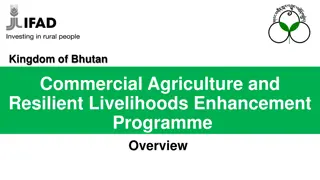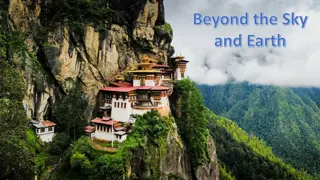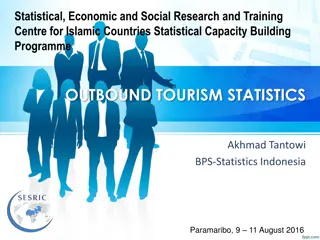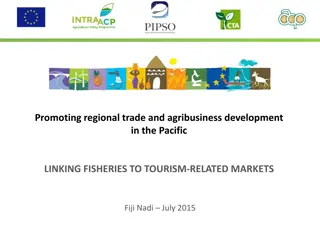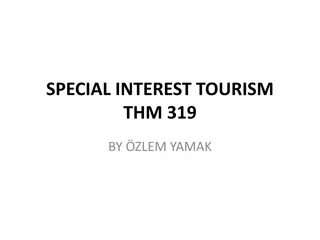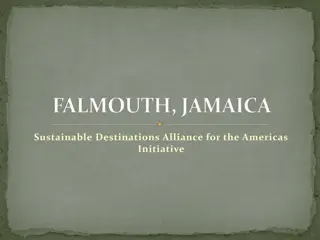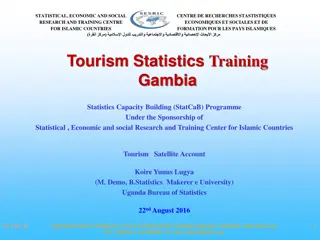Tourism Development in Bhutan: Trends and Sustainable Practices
Bhutan's approach to tourism has evolved since its government initiative in 1974, focusing on unique culture, rich natural environment, and spirituality. The country's emphasis on high-value, low-volume tourism has led to trends in privatization, product diversification, and community-based initiatives. With a strong commitment to Gross National Happiness (GNH) and environmental preservation, Bhutan's sustainable tourism model aligns with principles of non-exploitative development, making it a preferred destination for conscious travelers seeking authentic experiences in a pristine mountain ecosystem.
Download Presentation

Please find below an Image/Link to download the presentation.
The content on the website is provided AS IS for your information and personal use only. It may not be sold, licensed, or shared on other websites without obtaining consent from the author.If you encounter any issues during the download, it is possible that the publisher has removed the file from their server.
You are allowed to download the files provided on this website for personal or commercial use, subject to the condition that they are used lawfully. All files are the property of their respective owners.
The content on the website is provided AS IS for your information and personal use only. It may not be sold, licensed, or shared on other websites without obtaining consent from the author.
E N D
Presentation Transcript
Presented by: Tshering Choki, RSPN Akane Suga, JEEF
Tourism in Bhutan Tourism A government initiative in 1974 to generate revenue to promote the natural and cultural heritage A major step in opening up from isolation Regulated policy - High value low volume Evolved as a preferred tourist destination Product domains: unique culture and traditions rich natural environment Spirituality
Tourism in Bhutan Trends Number of tourists State owned to private State owned Bhutan Tourism Corporation Limited to thousands of Tour operators Product diversification Community based tourism Coverage Focus on eastern Bhutan Low trickle down effect
Bhutans approach to modern development GNH High priority to preservation and protection of its fragile mountain ecosystem and natural resources Emphasized in Article 5 of the constitution and associated Acts, rules and regulations Environmental considerations in development Focus on non-exploitative renewable natural resources RSPN efforts to supplement government initiatives RSPN piloted projects to explore alternative income options that are based on the principles of sustained environmental conditions Sustainable tourism viable in terms of both environment and development
Why CBST in Haa Recent to tourism access and development (opportunity for sustainable tourism development) Least travelled tourism destination in Western Bhutan refer graph Diverse cultural and natural resources Very close to Paro International Airport
Tourist arrival & bednights in Dzongkhags Haa Arrival: 2811 Bednights: 3532
Project Background Duration: 3 years (26th January 2015 31st January 2018) Project Donor: JICA under the JICA Partnership Program Project Counterpart (international): Japan Environmental Education Forum (JEEF) Project Area: Bjee, Katsho & Uesu Gewogs (Zone 1)
Project Objective Contribute community-based sustainable tourism destination that contributes to conservation of the natural environment, conservation of culture, and at the same time contributes to socio-economic benefits of the local communities. to establishment of Haa as a
Project Activities Institutional Mechanism & Network Strengthening Establish CBST steering committee at national level Establish working group at local level Conduct awareness , capacity building and meeting for steering committee members and working group Understand clear direction of Haa as a CBST destination Conduct baseline assessment survey (product diversification) Develop a sustainable tourism framework for Haa
Project Activities Develop CBST Products & Services Develop and train homestays Develop homestay guidelines Train local guides Explore, design and train souvenir production Explore scopes for developing a Visitor Centre Marketing & Promotion Organize tour packages to be that can be promoted by Developing website and promotional materials Using media and magazines
Project Activities Establish CBST Management Mechanism Develop a business plan for Haa CBST Explore options or form a CBST Group Train the CBST Group in management skills Replication of CBST for other Dzongkhags Involve representatives from the three districts of Mongar, Lhuentse and Trashiyangtse during trainings and meetings. Guide them in developing CBST proposals
